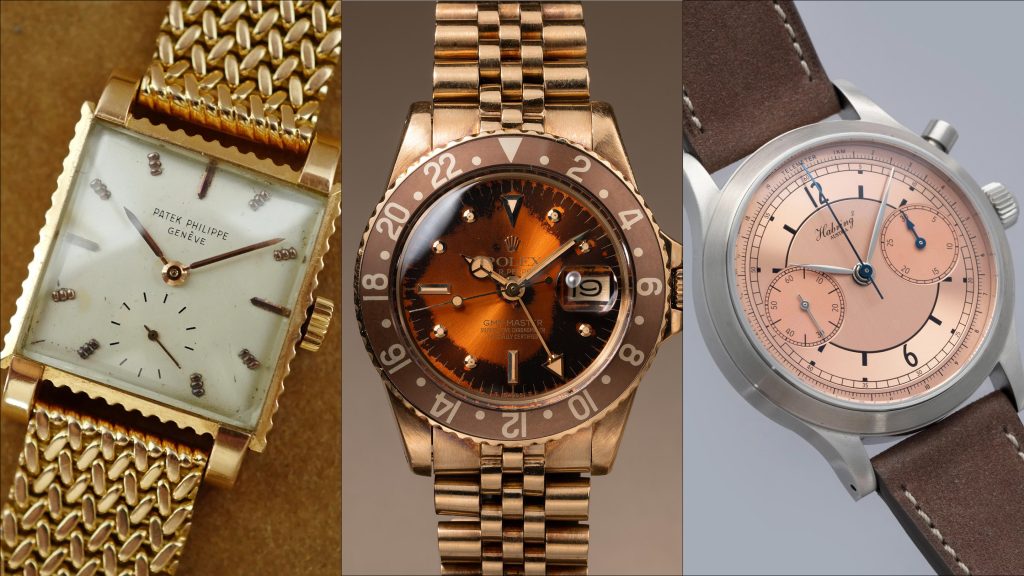Historical Disruption: The Cartier Tank Dive Prototype
In the post-World War I era of the early 1920s, women’s roles were evolving rapidly. They were stepping into sports, aviation, and even early marine exploration. It was in this cultural context that Cartier crafted a groundbreaking timepiece—an early dive version of its iconic Tank model, unusual for being both square-cased and waterproof. This prototype emerged from the commission of a pioneering French sportswoman and accessory designer based in Nice, known among her circle for experimenting in shallow dives and underwater strolls using early submersible suits. Cartier applied its signature refined aesthetic—a flat bezel, Roman numerals, sword-shaped hands—while integrating structural enhancements like a thicker depth-rated crystal, gasket seals throughout, a screw-down crown with a matching safety cap, and drilled lugs for retaining straps secure enough for submersion. Laboratory tests in a Mediterranean facility validated its water resistance up to pressures equivalent to 30 meters, evidently achieving the first widespread “sport-grade” women’s watch long before the term “dive watch” entered horological lexicon.
Today, Cartier archives—including internal design memos from 1924—describe a watch combining elegance and resilience. Reportedly, less than 100 pieces were produced, making the Cartier Tank Eau‑Proof a rare relic. Its influence lay dormant for decades until diligent collectors rediscovered it in private estates, prompting a reevaluation of Cartier’s role in early sports watchmaking. The proto-dive Cartier Tank exemplified a radical departure: a women’s watch built not for parlors but for performance, representing a unique challenge to gendered assumptions in luxury design nearly a century before modern conversations on equality.
Technical Legacy: Waterproofing Patents for Square Cases
Cartier’s technicians faced complex engineering hurdles adapting waterproof design—then novel—to square cases. The inherent difficulty was ensuring a consistent seal at four corners. Rather than craft bespoke gaskets for every function, Cartier patented a “double-chamber” compression system. The inner channel secured the crystal against pressure from beneath, while an outer screw-down caseback sealed the perimeter. Gaskets composed of compressed cork and lead alloys acted as cushioning seals. A screw-down crown protected by a matching cap that clicked via a bayonet locking track and featured its own O-ring addition created a secure interface—even during winding or time setting underwater. The protective cap integrated into the crown guard architecture enhanced waterproofing, potentially matching later Rolex Oyster innovations. The patent—filed in 1924 as “Cartier Seal for Aqua Instrument”—preceded more recognized waterproof innovations and reveals Cartier’s early expertise in engineering for aquatic environments.
These innovations influenced later sports watch construction. The dual-gasket system reappeared in mid-century benchmark dive models, while screw-down crowns became de rigueur. Today’s waterproofing norms—ISO 6425 standards and related practices—trace back to mechanical legacies Cartier pioneered over ninety years ago. Internal correspondence shows field tests conducted at sea off Cap d’Antibes, where Cartier’s chief engineer recorded success maintaining function after submersion at 10-meter depth. Early advertisements described the Tank “suitable for shore swims and yachting”—a bold marketing pivot.
Social Context and Gender Implications
In the 1920s, women’s attire and accessories were primarily decorative. Introducing an “Eau‑Proof Ladies’ Tank” signaled ideological progress: Cartier was granting women powerful technical objects, equipping them for performance, not merely display. The original patron, now revealed via personal letters and receipts, was no socialite but an explorer, a founder of a Mediterranean women’s swim league, and advocate for practical elegance. Choosing navigational fonts for the bezel markers signals her personal involvement in design—a wearer-partner with shared agency.
The Tank dive was rare, and its production halted by Cartier in 1930 due to economic downturns and small demand. Yet the model profoundly influenced Cartier’s future technical direction and quietly pressured Swiss design houses to consider waterproof cases across genders. Its recurrence in mid-century catalogs—albeit under-specified—is evidence of Cartier retaining awareness and shifting quietly toward sports proportions. The Tank Eau‑Proof stands as both a watch and a manifesto: tools and beauty need not be gender-exclusive. Modern scholarship, from horological journals to feminist design critics, increasingly recognizes its role in the evolution of luxury multifunctionality.
Modern Homage: Predicting a 2025 Reissue
Building on archival resurgence, Cartier is poised to launch a 2025 reissue of the Tank dive prototype—heralded by collectors and powered by momentous shifts in watch culture: greater celebration of vintage heritage, women taking center stage in watch collecting, and renewed reverence for mechanical craftsmanship over digital convenience.
Authenticity and Design Fidelity:
The case would maintain its 28 x 28 mm square silhouette with integrated lugs, reinterpreted in surgical-grade 316L stainless steel. The bezel would be slim but securely anchored, featuring subtle rehaut vents hinting at original specifications. A domed sapphire crystal with anti-reflective treatment would mimic the fluted profile of its acrylic predecessor. A screw-down crown cap, engraved with the original Cartier monogram, would seal via a gasketed system mimicking the cork-metal original, but with modern nitrile or EPDM seals for improved longevity. The caseback would bear twin engravings: “Eau‑Proof 1924” and “Re Edition 2025,” referencing the heritage.
Mechanics and Functionality:
Cartier would likely equip the reissue with their in-house Calibre 430 MC—an automatic movement derived from Jaeger-LeCoultre’s 889/2—with 100-meter water resistance, COSC certification options, and possibly an added central seconds hand for diver-style functionality. Horological purists might expect a rotating inner dive bezel controlled via the crown cap or a unidirectional external bezel inspired by the original specification. The sapphire caseback would display the movement, rotor decorated with wave guilloché mirroring the Mediterranean.

Aesthetic Authenticity and Luxury Finishes:
The dial could feature radially brushed opaline silver with painted Roman numerals filled with vintage cream Super-LumiNova. Cartier’s signature blued steel hands would be heat-treated, lending a classic yet sporty look. A tobacco-colored strap resembling heritage leather, lined with rubber for water resistance, would provide comfort; a matching steel bracelet with vintage-inspired link design as an alternative.
Limited Editions and Storytelling:
Cartier might offer two editions: a numbered Heritage “1925” run of 1924 pieces stamped with an archival serial, and an exclusive “Pioneer Series” limited to 500, which includes reproductions of the original commissioning documents, patent prints, and a mini exhibition box. Reissue marketing would draw on restored footage of the original owner diving in Nice, narrative essays by watch historians, and exhibitions in Paris and Geneva recontextualizing Cartier’s role in sports watch history.
Influence on Modern Watch Landscape
The reissue would embed several structural shifts into the watch market:
- A maestro pivot toward square-case sports watches—sparking interest from independent brands like H. Moser, Ming, and CODE41 to explore non-round tool designs.
- A milestone for women’s sports watches—ushering an era of robust, elegant timepieces marketed beyond niche or fashion, recognizing women collectors as core customers.
- A celebration of waterproofing heritage—prompting high-end brands to reexamine vintage gasket systems and embrace mechanical resilience over digital sensors.
- Narrative prominence—solidifying Cartier’s technical prowess beyond aesthetics and elevating archival campaigns as critical for brand value and collector validation.
Cultural Resurrection and Future Resonance
By relaunching the dive Tank, Cartier would correct historiography by spotlighting its foresight and placing women’s technical watches firmly within horological heritage. The model would herald a new age when mechanical sports watches for women were prefigured, not inspired later, inviting deeper engagement with under-recognized watchmaking legacies. Future collectors might seek out heritage dive Tanks, including independent reinterpretations, as symbols of design innovation and gender inclusivity.
Furthermore, its debut would recalibrate watch narratives around utility and elegance, emphasizing that innovation—water resistance, structural integrity, gasket geometry—emerged alongside feminine presence in technical aesthetics. Museums might integrate the reissue alongside the original in display contexts with archival patent drawings, aquatic photography, and Cartier’s engineering documents, deepening educational value.
Conclusion
A 2025 reissue of the 1920s Cartier Eau‑Proof Tank would do more than revive a historical model—it would restore a design revolution and elevate it into contemporary discourse. It would challenge current assumptions about sports watch form and gender, breathe life into archival patents, and inspire cross-genre innovation. It would be a celebration of Cartier’s ingenuity and the quiet subversion of technical elegance for women—a message long overdue. This watch, combining design, engineering, and feminist history, could mark a redefinition of what constitutes luxury—durable, elegant, and historically rich.









































